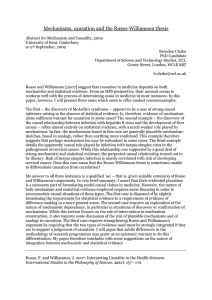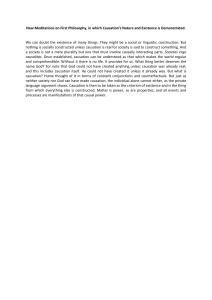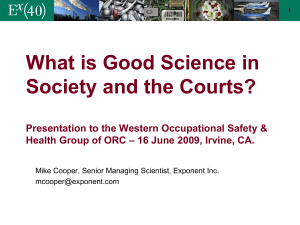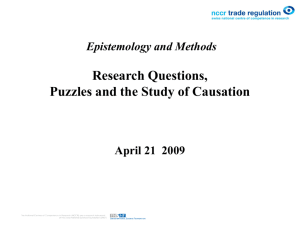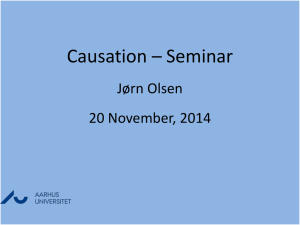how to know whether an exposure to chemical(s) caused an illness
advertisement
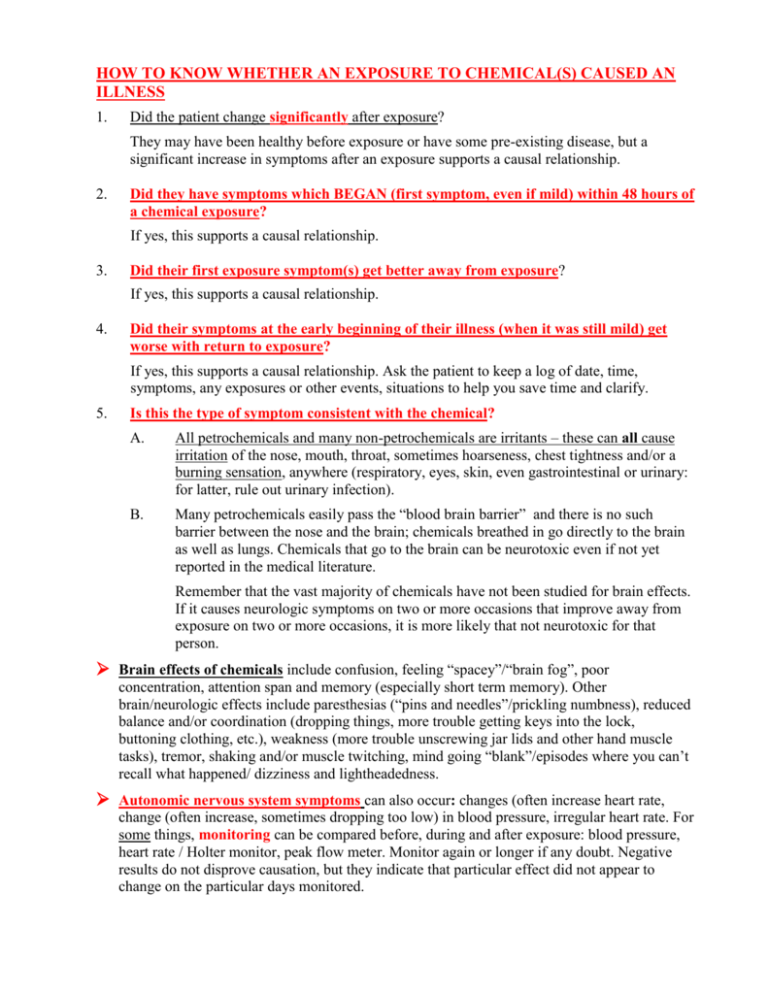
HOW TO KNOW WHETHER AN EXPOSURE TO CHEMICAL(S) CAUSED AN ILLNESS 1. Did the patient change significantly after exposure? They may have been healthy before exposure or have some pre-existing disease, but a significant increase in symptoms after an exposure supports a causal relationship. 2. Did they have symptoms which BEGAN (first symptom, even if mild) within 48 hours of a chemical exposure? If yes, this supports a causal relationship. 3. Did their first exposure symptom(s) get better away from exposure? If yes, this supports a causal relationship. 4. Did their symptoms at the early beginning of their illness (when it was still mild) get worse with return to exposure? If yes, this supports a causal relationship. Ask the patient to keep a log of date, time, symptoms, any exposures or other events, situations to help you save time and clarify. 5. Is this the type of symptom consistent with the chemical? A. All petrochemicals and many non-petrochemicals are irritants – these can all cause irritation of the nose, mouth, throat, sometimes hoarseness, chest tightness and/or a burning sensation, anywhere (respiratory, eyes, skin, even gastrointestinal or urinary: for latter, rule out urinary infection). B. Many petrochemicals easily pass the “blood brain barrier” and there is no such barrier between the nose and the brain; chemicals breathed in go directly to the brain as well as lungs. Chemicals that go to the brain can be neurotoxic even if not yet reported in the medical literature. Remember that the vast majority of chemicals have not been studied for brain effects. If it causes neurologic symptoms on two or more occasions that improve away from exposure on two or more occasions, it is more likely that not neurotoxic for that person. Brain effects of chemicals include confusion, feeling “spacey”/“brain fog”, poor concentration, attention span and memory (especially short term memory). Other brain/neurologic effects include paresthesias (“pins and needles”/prickling numbness), reduced balance and/or coordination (dropping things, more trouble getting keys into the lock, buttoning clothing, etc.), weakness (more trouble unscrewing jar lids and other hand muscle tasks), tremor, shaking and/or muscle twitching, mind going “blank”/episodes where you can’t recall what happened/ dizziness and lightheadedness. Autonomic nervous system symptoms can also occur: changes (often increase heart rate, change (often increase, sometimes dropping too low) in blood pressure, irregular heart rate. For some things, monitoring can be compared before, during and after exposure: blood pressure, heart rate / Holter monitor, peak flow meter. Monitor again or longer if any doubt. Negative results do not disprove causation, but they indicate that particular effect did not appear to change on the particular days monitored. Beware that Holter reports are not designed for chemical monitoring – review yourself when heart rate/rhythm changes occurred and compare to patient log or history. Trust your patient’s history. No one wants to lose their job and people very rarely lie to their treating doctor. You may not understand the effects: that does not mean they do not exist or are “imagined” or psychological in origin. MANY PATIENTS HAVE BECOME DISABLED BECAUSE THEIR DOCTOR DID NOT UNDERSTAND, OR FAILED TO TAKE ENOUGH TIME, FAILED TO TEST, AND TOLD THE PATIENT THEY WERE FINE OR DISMISSED THE SYMPTOMS WITH A PSYCHOLOGIC LABEL! DON’T HARM PATIENTS THIS WAY! Psychologic illness does not make a person more likely to develop chemical illness. Before making any psychologic diagnosis, at least use the DSMIV Manual of the American Psychiatric Association to be sure they meet all the criteria. If any doubt, get psychiatric referral before making a psychiatric diagnosis. Also remember, a patient can have toxic injury even with a psychologic diagnosis – DON’T MISS TOXIC INJURY – THE PATIENT CAN KEEP GETTING SICKER AND BE DISABLED FOR LIFE! 6. Are any co-workers affected? This is supportive evidence of a chemical causation but not essential. Every person has differing abilities to detoxify, susceptibilities to irritants vary between persons, blood-brain barrier function varies with individuals, skin absorption varies, etc. A chemical is more likely that not the cause of symptoms if criterion 1 through 5 are met. This is sometimes referred to as “reasonable medical certainty” or “reasonable medical probability”. Chemical causation does NOT the burden of proof of criminal law. CHEMICAL CAUSATION ONLY NEEDS TO BE MORE LIKELY THAN NOT, AND IF IT MEETS CRITERION 1 THROUGH 5 ABOVE, CAUSATION IS MUCH MORE LIKELY THAN NOT THE CHEMICALS(S) OF EXPOSURE. 7. Lab results that are typical of chemical injury are further supportive evidence. See Dr. Ziem’s papers (August 2001, October 2003) for abnormal test patterns that are typical of moderate to severe chemical injury. Less disabled patients will have fewer changes.
